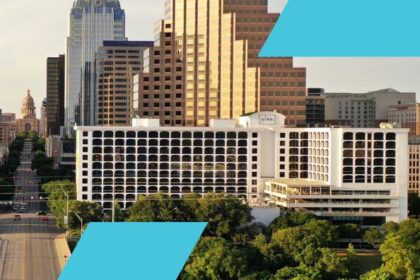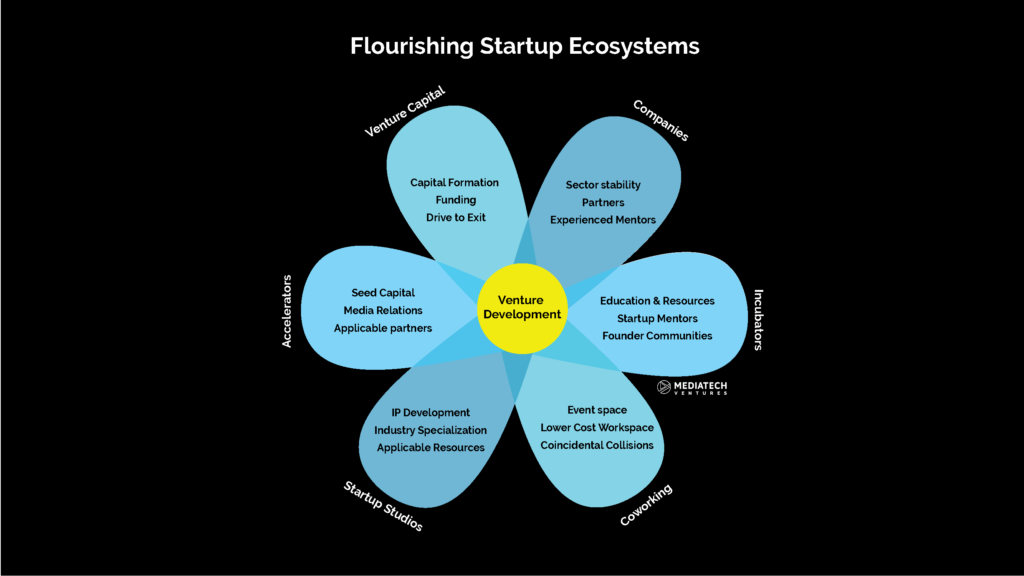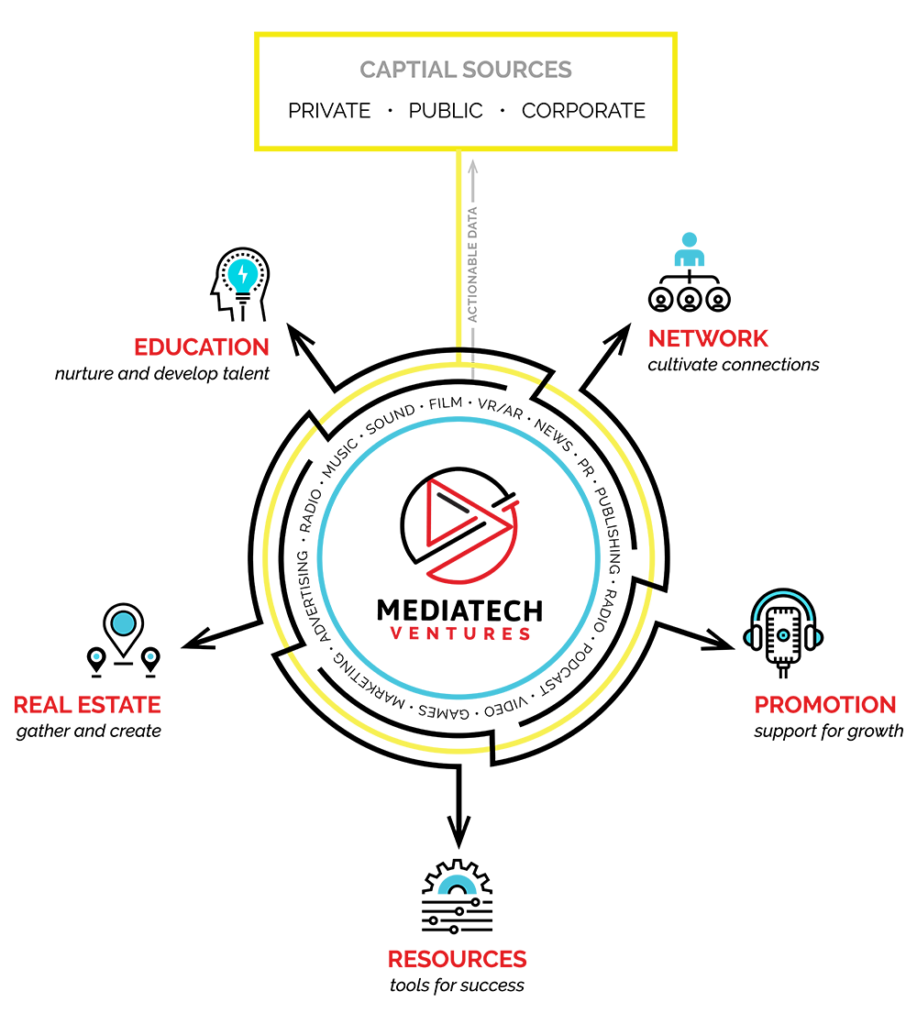
Regional culture, history, and infrastructure are the qualities of a region of the world that drives innovation, jobs, and economic development because technology is ultimately about people and their potential.
A really a wonderful article about Austin in The New Yorker sparked a series of wonderful discussions of the past and present of the Austin ecosystem and in one case, as I proposed, how the brand of “Austin” has exceeded the realities on the ground. Austin is where TV shows want their cast to be featured. Austin is the city that companies are using when they want to threaten their home state that they’ll pick up and leave. When HR is looking to hire, they add “Austin” to target remote-work locations. And heard in the halls of Economic Development offices throughout the world, “… something like what Austin has figured out.”
“No city in America has changed more than Austin has in the last two decades,” noted Ricardo Ainslie of The University of Texas at Austin as Louis Black with SXSW (coming up in March) added, “There was a significant community here that had a vision about what a city should be.” Austin would be creative, cooperative, noncompetitive, green, and politically plugged in. “We succeeded.”
I frequently point out, in celebrating Austin’s ecosystem, how America achieved its success: Immigration – people coming here to the United States from various cultures, ethnicities, religions, and histories, catalyzing change.
What’s causing Austin to change so frequently and to draw the attention of the world is immigration to Austin.
As Black put it, “Suddenly, everybody began saying, ‘We’ll meet you in Austin.’”
Known as the Live Music Capitol of the World, Austin has also become globally recognized as one of the hubs of innovation, entrepreneurship, and startups. In my work in venture development, I’d like to explore better how that works – not why it’s so nor the history that brought us here (which is well covered in those New Yorker discussions) but what today makes Austin not only ideal for entrepreneurs but sustainable opportunity for investors.
While companies and universities develop and commercialize inventions and IP, startups play a very unique role in our economy, rewarding passionate and driven entrepreneurs and risk-tolerant investors as these temporary ventures uncover new business models while turning ideas and solutions into jobs. Hundreds of thousands of startups throughout the world generate solutions, new products, innovative services, and disruptions that change the world because so many are motivated and capable of shouldering the losses involved in endeavoring to improve the world – absorbing all of the missteps, misunderstandings, and missed signals that result in countless failures.
Begging an apropos question of cities and regional economic stakeholders such as property developers, banks, law firms, and major employers what can be done to reduce those likelihoods of failure? Austinites shun the comparison to Silicon Valley, but we’d be remiss in the world today if we didn’t recognize that a sustainable ecosystem of innovation emerged in both Northern California and Central Texas – how? It’s not tech, venture capital, nor mentors alone that start or maintain an ecosystem for entrepreneurs. It’s everyone working together to reduce the risks and fuel the resources that enable founders.
Article Highlights
How to sustain a startup scene that works
With increasing regularity, that’s the question asked of many of us in Austin, particularly, those of us from New York, Boston, or San Francisco, such as myself, who more accurately ask, what can be learned from a place like Silicon Valley AND Austin so that we might accomplish the locally meaningful impact the community is seeking?
The US has three times more startups than anywhere else. Whether by geographic size, population, or economy, we can’t possibly account for such disparities when it’s simple enough to see that a much more vast population such as India has a relatively small fraction of startups, while a far smaller population (the UK) is party to a greater relative share.
Something is unusual in in being unusual, we can identify, study, support, and even replicate the characteristics of distinction. What creates entrepreneurial people is society and culture.
“Regional culture, history, and infrastructure are the qualities of a region of the world that drives innovation, jobs, and economic development because technology is ultimately about people and their potential.”
Successful startup founders are driven, tenacious, and passionate, and since startups aren’t “tech,” and they’re distinct from new businesses in that they’re innovative and often disruptive, we can start to look to our region of the world and ask what’s being done to help foster entrepreneurial people. We can’t teach someone to be an entrepreneur; we can teach them how to start and run a business. We can’t guide someone to the “correct” way to create a company; we can only mentor and advise from experience what will likely work, and what will assuredly not. It’s impossible to manifest an invention and just be innovative; the very nature of this work relies on experiments, research, risks, and trials.
Startups are a series of lessons from failures, pivoted into new opportunities while avoiding mistakes.
While we can’t teach that tendency, that culture, we can develop a culture and society that inspires people to be entrepreneurial and enables entrepreneurs to take the risks involved in being founders.
Startup Development Organizations inspire entrepreneurship and enable entrepreneurs to take the risks involved in being founders. Are they the key?
- A hub, such as 2112 in Fort Knox Studios in Chicago, connects large parts of a startup ecosystem and makes it easier for everyone to connect and get involved – all under one roof: office space, shared common areas, entrepreneurs, advisors, capital, and mentors. I find myself in Houston as we speak, at The Ion, easily one of the most innovative uses of space in the country; the region’s hub from which spokes reach to other programs and places.
- Entrepreneurs and intrapreneurs benefit from Innovation Labs, such as (outside the box I suspect since you might be focused on R&D, wet labs in biotech, or corporate innovation programs), AFWERX or Army Futures Command, the innovation arm of the United States Air Force. Innovation labs, and organizations by other names, help develop and commercialize Intellectual Property (IP and patented works) through collaboration with companies and incubators aligned with industry objectives.
- Incubators which teach entrepreneurs and work with product or business ideas to develop solutions and start companies more likely to succeed, thanks to resources, networks, curriculum, and programming. Greentown Labs a Houston incubator focusing on climate technology is a wonderful example in a sector beyond our own programs for MediaTech
- Accelerators increase sustainability and impact, drive growth, and evolve startups into competitive, scalable companies. Assuredly, the best known among accelerators is Techstars; typically, Accelerators are defined by extensive communities of partners and investors, media relations as startups are ready for the world stage, and their own financial investment (ranging from $10,000 to $100,000).
- Venture studios, or as I prefer to call them, Startup Studios, establish replicable models for the early phases of startup development, reducing the risks for founders and investors, by participating themselves as one of the partners in the new ventures – Startup Studios serve as a technical co-founder, at least and if not more so, with ownership in exchange for the work.
Startup Development Organizations are critical to the future of our economy precisely because the way we work requires that we’re more innovative, more creative, and more comfortable with risks. It’s herein where people can vet ideas, test possibilities, hone their pitch, determine product-market fit, expand their network, and create solutions that might become companies.
But I’ve come to consider that it’s no more entrepreneurs, mentors, or investors, it’s not tech companies, and it’s not startup development organizations that are the trick – each of those has strengths and weaknesses wherein risk is only sustainably overcome when more is in place to help the ecosystem thrive. While we can simply put such things in our cities, such a thing alone does not an ecosystem nor healthy economy make. We know full well from our experiences thus far, our cities don’t become “tech hubs” or startup epicenters (or, God forbid, “the next Silicon Valley”) thanks to Venture Capital, attracting tech companies, nor the government funding an innovation space – at least not such things alone.
How might we fuel that ecosystem in Austin?
Developing Startup Ecosystems
Venture Development
“Startup ecosystems include the startups themselves and their founders, employees and contractors, the angel investors and venture capitalists who fund them, and the incubators, co-working spaces and accelerators that house them, along with business plan competitions, universities, educational classes, bloggers, community groups, tech meetups and other support organizations that help them,” David S. Rose, CEO of Gust. “It additionally includes the professional service providers they engage (law firms, accountants, investment bankers, et al) and the larger corporations who serve as their customers, partners and eventual acquirers.”
Think that can be done through your city’s public policy? Perhaps an ecosystem so vast is as simple as a model for the Chamber of Commerce to execute? Maybe. This is like economic development, but it’s not.
Economic development is usually the focus of federal, state, and local governments to improve our standard of living through the creation of jobs, the support of innovation and new ideas, the creation of higher wealth, and the creation of an overall better quality of life. Economic development is often defined by others based on what it is trying to accomplish. Many times, these objectives include building or improving infrastructure such as roads, bridges, etc.; improving our education system through new schools; enhancing our public safety through fire and police service; or incentivizing new businesses to open a location in a community.
– Drawn right from the curriculum of Economics study
How much of that sounds meaningfully and directly beneficial to startups? “In support of innovation and news ideas,” “the creation of higher wealth,” and “overall better quality of life” are shared values with most entrepreneurs, but the creation of jobs, schools, and even public safety aren’t the initiatives that REDUCE risk and inspire ideas so that a community might fuel more startups. Notably, our definition distinguishes too, “incentivizing new businesses to open” – startups are temporary ventures seeking new business models, distinct from new businesses.
Venture Development focuses on the distinct risks and resources of Angel Investors and Venture Capital, the programs and Startup Development Organizations that capably and effectively foster founders, and the strengths of the regional economy and sectors of industry, to develop the venture economy.
While not formally nor consistently defined, it’s time we start doing so, so let’s draw from Economic Development to distinguish Venture Development, “Usually the focus of the private sector, in support of the public sector, to improve the outcomes of the efforts of entrepreneurs and early stage investors, through the direction, promotion, and development of the startup stage of an economy, driving innovation and new ideas, creating opportunities, and enabling a distinct, diverse, and accessible culture and ecosystem in which startups thrive. Venture development could be simply defined as increasing the rate of startup development and investor return. Many times these objectives include building or attracting Startup Development Organizations; improving economic policy in support of innovation spaces and coworking; ensuring sector-specific education to foster a workforce ready to work on behalf of startups in the region; enhancing community and communications to remove barriers to entry and create greater awareness; and incentivizing established companies to open a location in the region as those companies bring resources to bear on behalf of the entrepreneurs.”
Developing a Flourishing Startup Ecosystem
Startups exist not thanks to venture capital nor tech, and not thanks to a single innovation hub or entrepreneur program at the university, but thanks to the interaction of incubators, coworking spaces, startup studios, accelerators, venture capital, and innovative companies, serving one another as an ecosystem wherein the founders can afford the risks taken.
Yes, I said flourishing startup ecosystems depend on companies. Let’s start there.
Companies
Companies provide sector stability in that they offer the jobs, job training, and even some capital investment (sponsorship) of the industry itself. A region with only one company in a sector isn’t likely well developed so we can look at Austin’s established employers to appreciate better what we do well here as founders. How?? Company executives and directors are ideal mentors and angel investors while the companies themselves are the initial partners founders seek in what they’re working to manifest.
- Dell
- National Instruments
- Adobe
- Electronic Arts
- Amazon
- HEB
- Tesla
- Tito’s
- Apple
- Q2
- Indeed
Tell me you don’t see patterns in there, patterns that reflect what Austin does well as a startup ecosystem, and to where we can turn for partnerships, mentors, and sponsorship of the ecosystem so that founders are supported and sustained in good times and bad.
Incubators
Incubators teach founders while providing the resources and a network of peers and mentors, familiar with this stage or those sectors in particular.
Notice now in MediaTech Ventures’ visual of Venture Development, how Companies overlap with Incubators; and likewise, how each element of a startup ecosystem overlaps with another, all supporting the venture development work. Dell operates Dell for Startups while Q2 and Indeed have innovation studios, and if we look to the incubators (not yet the accelerators), we can see some alignments with the companies (and industries) ideal in Austin’s ecosystem:
- SKU
- Austin Technology Incubator
- MediaTech Ventures’ programs
- Bunker Labs
- DivInc
- Founder Institute
- 3 Day Startup
Coworking
Evident in the quarantine of COVID-19, the Great Resignation, remote work, and working from home, we’ve discovered that founders need not work from anywhere and yet, they do benefit from shared space. The challenge for a startup ecosystem is affordability, not only in the cost of housing to entrepreneurs but in the sense that founders need to collide, meet, and collaborate, without the burden of the untenable cost of office space. The last thing a startup should be spending money on is a room in which to work. Coworking lowers the cost of workspace while also serving as event space and providing what’s considered “coincidental collisions” – running into like-minded people (and potential team members).
Cheryl Winokur Munk reports in the Wall Street Journal: Study finds working in close range led to knowledge-sharing and faster innovation.
Note a consistency in Silicon Valley and Austin… that both cities are actually what we consider unaffordable. Many throughout the world argue that a low cost of living is advantage of a city for entrepreneurs, but the data implies otherwise – that a relatively high cost of living causes founders (and more importantly investors) to appreciate the VALUE of people and the cost of competing globally. Startups in expensive ecosystems tend to raise more capital, arguably for no reason other than the cost making everyone consider that it takes more capital than it might if they found themselves in Des Moines – enabling sufficient resources to compete with entrepreneurs in other cities raising as much or more.
Expensive and yet affordable, how does the ecosystem thrive while being pulled in both directions?
Our visual shows how Austin thrives, in that Incubators leverage space for operations, enabling our collisions between people. When shared workspaces are underwritten (paid for) by companies (sponsors), we enable founders and incubators to impact the ecosystem in even greater ways – raising the capital for what they really need rather than spending it on space. And with the diversity of work spaces in Austin, we have evidence that people can and want to get together throughout the city:
- Impact Hub
- Duo Works
- WeWork
- Capital Factory
- Industrious
- FUSE
- Createscape
- VESSEL
- Common Desk
Startup Studios
We’d do well bundle our Innovation Labs and other forms of R&D among our Startup Development Organizations in with Startup Studios because similarities exist (though operations and models might differ). It’s here where Intellectual Property is more meaningfully researched, developed, and commercialized. Distinct from Incubators, which teach founders and help develop the ventures, think of these more in the context of the product development and the value of that asset as an opportunity. Startup Studios tend to align with specific industries as resources applicable to what’s being done, are paramount in success herein – wet labs, robotics spaces, film studios, and creative design hubs, would all be considered similar.
Like the use of shared workspace, coworking, by incubators, our overlap between Startup Studios and Coworking is in the shared use of such spaces and the collaborative way in which a lab or venture studio could also be or be part of coworking.
- ACC Biosciences Incubator
- Texas Innovation Center’s The Lab
- Newchip
- MassChallenge
- Texas Health Connect
- AFWERX
Accelerators
Providing seed capital to accepted startups, Accelerators play a later stage role than Incubators and we’d do well for our economy by correcting people who use “Incubators and Accelerators” as a phrase as though these two are interchangeable.
- Accelerators accelerate.
- Startup or Venture Studios build with you
- Incubators ideate, research, and teach
Expect Accelerators to do the work that accelerates your venture, providing things like Media Relations and other means of scalable growth, access to relevant partners since you’re ready for them, and more direct access to capital than mere introductions and office hours.
Drawing from Startup Studios, our overlap manifests in that we have ventures at a stage well beyond Incubators. Founders should know what they’re doing (perhaps from an Incubator earlier), have developed solutions (IP and products – such as what emerge from Startup Studios), and we’re ready to go. Where? Here are some:
Venture Capital
Venture Capital is a critical facet of Venture Development because it serves as both the aggregator of capital resources (referred to as Capital Formation) and exists as a signal of a healthy startup ecosystem. Too often neglected, is that Venture Capital (and Angel Investment) gets involved with startups seeking a Return on Investment; that manifests as a result of an “Exit” – either a venture going public and becoming a publicly traded company or getting acquired.
Thus, Venture Capital, helps drive founders to exit; cycling capital back into funds, through successful founders, and moving Intellectual Property and innovative team back into Companies.
We overlap Venture Capital with Accelerators conceptually because startups before this stage are usually premature for Venture Capital Funds, though Angel Investors get involved. Venture Capital provides capital at the scale necessary for founders the result of (directly or indirectly) what we’ve covered thus far.
- S3 Ventures
- LiveOak Ventures
- Mithril Ventures
- Breyer Capital
- Next Coast Ventures
- True Wealth Ventures
- Sante Ventures
- CAVU
- Moonshots Capital
- Notley Ventures
Bringing us full circle, back to Companies. Companies overlapping with Venture Capital in Corporate Venture Funds and the role Companies play in acquiring startups (delivering exists) that return investments to Venture Capital.
Author’s note. I have NOT included everything, I can’t possibly do so. I want you to think about the way in which everything works together rather than this being an exhaustive list or nod to everything that led to today. Also note, and let me explain, I have characterized some of these things differently than they characterize themselves – there is reason for this; a maturing ecosystem will look to the components for what they are more than the words they use.
_____________
Before I wrap up, let me point out one other subtlety of our Venture Development model
The facets both overlap and appear opposite one another:
- Incubators are not Accelerators, as I already alluded
- Companies are private entities developing IP whereas Startup Studios are doing similar work but more publicly – as labs or partners
- And Venture Capital sits across from Coworking because the benefits of reduced costs and coincidental collisions in person means that founders are more wisely allocating capital resources to the work they should be doing.
A well “Venture Developed” startup ecosystem (i.e. a healthy startup ecosystem) is one in which these entities not only serve one another but that opposite entities work closely: Accelerators support Incubators to draw from them, Venture Capital sponsors or underwrites workspace so the ecosystem can afford what matters, Companies and Studios work in conjunction with one another in research, IP, and product development; all of that though, only possible, when each facet of the ecosystem also meaningfully overlaps with the counterparts that enable it to play the role it’s best suited to play.
Appreciate that the intent of my lists was not to be exhaustive nor precise with what *they* call themselves but rather to make you think differently about how what is in Austin works in concert to remove the risks for entrepreneurs while fueling innovation and startups.
Hopefully though, something still feels missing though, yes? Perhaps?
What of the Media? Does an ecosystem not need the story tellers, journalists, reporters, and networks that connect everyone through information and social media? What role might that play?
In fact, without DIGG, Techcrunch, and Venture Beat in Silicon Valley, it would not exist as it does today and with that in mind, Austin would not even be possible without the media communicating where, why, and how to connect and engage with the Austin startup scene.
This is the work we do in MediaTech Ventures, cultivating the connections, supporting growth, illuminating tools to help founders, gathering in places, and nurturing and developing the talent. To us, all of the elements of a flourishing ecosystem depend on this flywheel being meaningfully in place so that everything above works well.
Imagine what the Austin startup scene would be like without Marc Nathan’s T-Squared newsletter, without the Austin Startups Facebook Group with nearly 25,000 people in it, without Laura Lorek’s work or Brent Wistrom’s reporting, without Austin Next from the Scharfs, without the brilliant Austin Forum on Technology & Society, without the Austin Venture Association and without the Austin Technology Council. SXSW is upon us, imagine the Austin Startup Scene without one of the world’s greatest experiences in culture and innovation – distinguishing and promoting Austin’s entrepreneurs.
The Austin startup scene flourishes because of the community of communicators and networks that ensure mentors, founders, and investors have easy, efficient, and affordable access to all that’s available.
That’s the secret – embrace change, celebrate growth, and be a creative and cooperative community the likes of what’s fueled when so many people want to be there.
Speaking of SXSW, we’ll be all over the 2 weeks this March 2023, particularly with Funded House and connections, panels, interviews, and podcasts throughout.
Be sure to register with us at fundedhouse.com








Paul, so many people who drive and support Austin connections and support business growth. Your drive and passion is inspiring.
Thank you for the Austin Venture Association call out. Exciting opportunities coming in 2023!
You are so right — as an ecosystem we are the sum of all our parts. We need to not compete between the many agents that serve our community- and instead collaborate!!!!
Austin did not get here by accident- it was the efforts of engaged visionary leaders who worked together for a better future for Austin. They gave time, money, and support to create what we all enjoy today.
We need to keep that spirit alive!!!
Growth rather than slice
Paul O’Brien the famous 1980s professional speaker, Cavett Robert, was famous for saying “let’s not fight over the slices of the pie…. Let’s bake a bigger pie”
• Thom Singer, CSP
Something to explore is how it’s driven by a culture of scarcity or abundance.
I propose, Austin’s messages have always been disjointed from reality. e.g. Live Music Capitol of the World and yet most musicians below the poverty line and a City that is purposefully redeveloping venues and historic sites, plus, few labels. etc.
Goal in this post wasn’t to be negatively critical so take it as positive criticism, trying to work out how to be better… The scarcity mentality comes from the message saying one thing but reality experienced being different.
This causes everyone here to fend for themselves, presuming they have to get by and look out for themselves.
Change the messages (as I somewhat did in the article: explain things for what they are rather than what they say) and people have better experiences with the expectations met. That feeling is abundance and abundance fuels collaboration.
I’m an example of this. When I moved here almost 14 years ago, I felt scarcity. Difference being, it was bad enough for my world (VC/Startups) that I did something about it to bring abundance. Now I feel abundance thanks to everyone’s efforts, and so I’m much more involved in everything, write more, etc.
Paul O’Brien yep- I agree. Positioning and pretending becomes a vicious circle. When we can just show up and be real about the good and the bad of a company, individual, or organizations – everyone wins. Fake it til you make it or out right presenting a false narrative leads to problems.
I say it to all who will listen – community, collaboration, and conversations can solve all problems.
You are right to start such conversations where we can all be real. It will help all in the long run.
• Thom Singer, CSP Fake it till you make it is for Founders, not the City, SDOs, incubators, VCs, and Accelerators
Paul O’Brien even with founders- take the positive side and mindset – but don’t “lie” or “pretend”
Always well stated Paul- we are lucky to have all of this in our backyard! Looking forward to a great SXSW ’23
Brilliant Post Paul, hope to see you at SXSW
Let’s make sure it happens Paul Manivannan
Let’s do a Paul Flash Mob
SUNN: Sustainability United for Nurturing Nature belongs in Austin
I long for this….
This is what I’m talking about!!! Thank you, Paul!
Wonderfully articulated and even better mesaaged sir. The continued need for a maestro of no incentive to create the structure (and deep fundraising) is next! Thank you Paul, truly incredible orchestration here.
Let’s get to work
Trust. That is the most complicated element an ecosystem must generate among stakeholders to maximize its efficiency and effectiveness. I spoke to 4 global leaders: from Australia, Taiwan, Canada and the US. I had interesting insights from them, including this one. And I’m happy to share it with you all
Paul O’Brien thank you for this insightful and meaningful perspective! So many of these types of articles spell out problems but offer very limited – if any – solutions or opportunities for growth! Being based here in sandiego, we often talk about the similarities and shared strengths between austin and this SoCal ecosystem… well done!
Ken Schmitt (He/Him) thank you! I’d love to chat about this with you and explore it re: San Diego because this is the work I actually do. MediaTech Ventures engaged with Cities, or other stakeholders, to work out the ideal solutions for that region.
We uncover the gaps in Economic Development and what’s lacking in the city, and then research, work, and direct what’s missing.
Too many cities think they can be a hub of innovation or support startups by focusing on “tech” or “venture capital” — they’re wrong. Usually evident in how the entrepreneurs and startup scene are comprised more so of business consultants and new businesses than mentors, advisors, and startups.